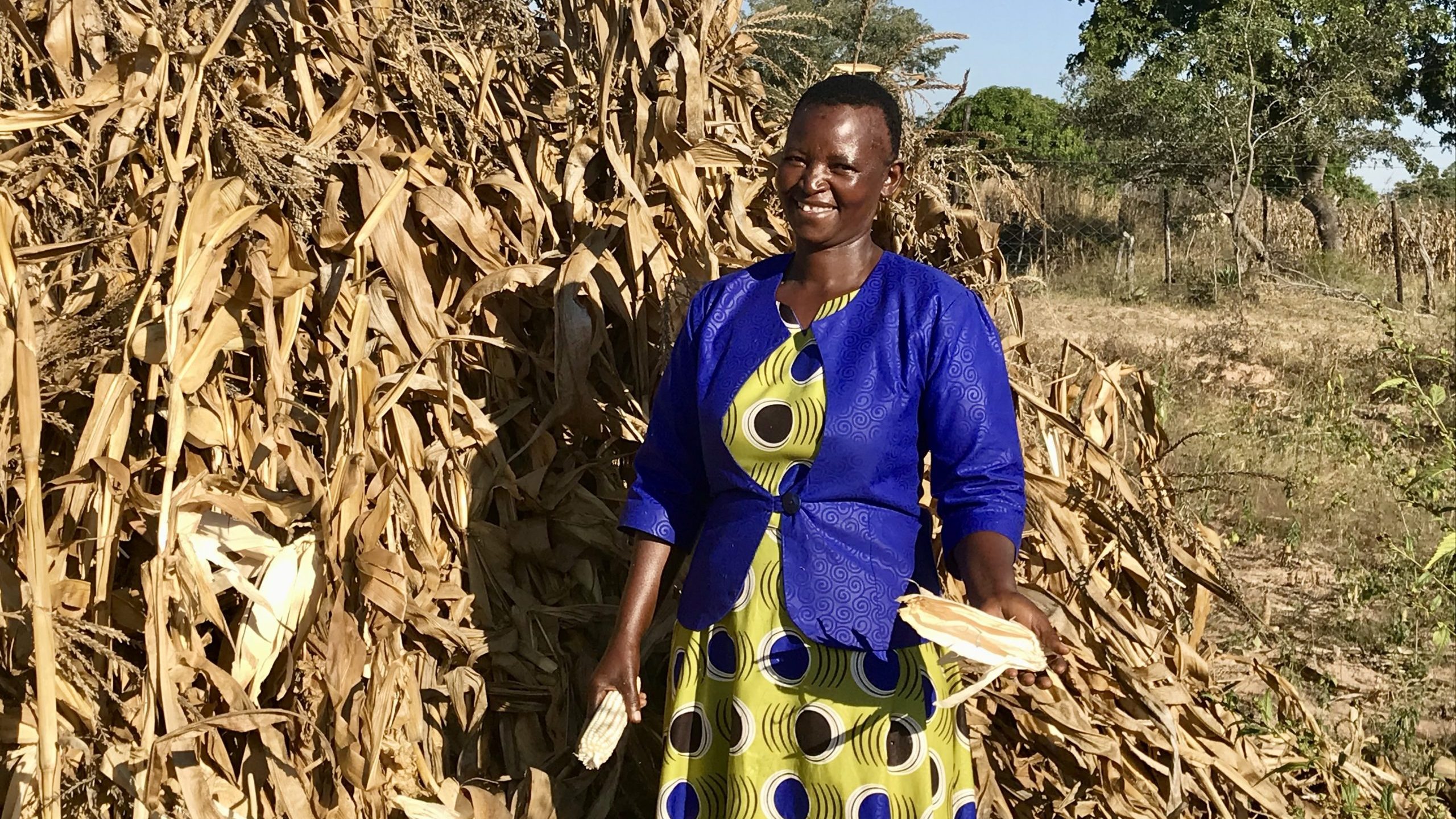Smallholder farmers on path to agricultural recovery after Cyclone Idai
Smallholder farmers are on their way to agricultural recovery after severe losses caused by Cyclone Idai. When the cyclone made landfall in Zimbabwe, the torrential rain, ferocious winds, flash floods and landslides severely damaged large fields of maize, groundnuts, cowpeas, sorghum and other crops, eradicating people’s livelihoods.
“I lost most of my maize crop and only managed to salvage four bags of maize; additionally, eight chickens a fowl run and a Blair toilet were completely destroyed,” said Thandiwe Saungweme, a 52-year-old widow of Matanda village in ward 18 of Mutare district.
Thandiwe was also affected economically, as she had no other source of income for food security and the family’s livelihood. The loss of the birds alone resulted in an estimated loss of about USD 7 per chicken. The reconstruction of the fowl run and toilet would cost an estimated USD 240. Thandiwe had an additional financial burden of sourcing funds to procure agricultural inputs for the 2019/2020 season.
“This was a great loss. I used all the savings for the children’s school fees to buy food. Even this was not enough as my six children once slept without food,” added Thandiwe.
“FAO and LEAD came to our rescue through the Zimbabwe Idai Recovery Project (ZIRP), giving us knowledge on climate-smart agriculture, pre and post-harvest management and most importantly, giving us inputs to reestablish our cropping activities. Since then, we have been on the path of recovery. Our productivity has increased and we are ready for future natural disasters,” asserted Thandiwe
Thandiwe uses climate-smart minimising technologies like Pfumvudza to increase crop productivity and hermetic bags, provided through the ZIRP, to safely store her harvest, thus minimising post-harvest losses and eliminating the use of pesticides. If not used properly, they can be detrimental to human health and the environment.
FAO is supporting smallholder farmers to rebuild their livelihoods and food security while strengthening resilience to future shocks by providing crops and livestock inputs as well as training and extension services. “The implementation modality of ZIRP supports a broader agenda for collaborating and working with the Government of Zimbabwe and other development partners to ensure that no one in Zimbabwe goes hungry,” said Patrice Talla, FAO Sub-regional Coordinator for Southern Africa.
Since October 2019, ZIRP has assisted 10,000 vulnerable farming households in storing their productive capacity by providing crop inputs comprising maize seed, cowpea seed, hermetic bags, basal and top dressing fertilisers. A total of 4,527 livestock farmers have benefitted from livestock inputs consisting of supplementary stock feed and inputs for fodder production. The provision of crop and livestock inputs is coupled with training, extension and advisory services to farmers.
For the 2020/2021 season, Thandiwe received 10kg of maize seed which she planted on a 0.4ha Plot, 2.5kg of cowpea seed together with 100kg of Ammonium nitrate and 100kg of compound D fertiliser. This resulted in improved production of maize for her.
“To date, I have threshed 16 bags of maize and bagged 12 buckets into the 4x50kg hermetic bags that I received from ZIRP. I am still in the process of threshing my maize and expect to attain 30 bags of maize from just 0.4 hectares, something I did not dream I would ever achieve,” said Thandiwe. Thandiwe plans to sell surplus maize to improve their livelihoods and standard of living.
“I only need 16 bags for household consumption up to the next harvest. I will then sell the remaining 14 bags of maize to help pay for my children’s school fees, procure inputs for next season and if there is any surplus cater for other household needs,” added Thandiwe.
A recent joint monitoring tour of project sites – including that of Thandiwe – conducted by the Department of Civil Protection (DCP) and the United Nations Office for Project Services (UNOPS) noted that, “Project beneficiaries are evidently more motivated and purposeful in their approach to agriculture and livelihoods” and that there is “a primer for food security and enhanced post-harvest food preservation and storage.”

